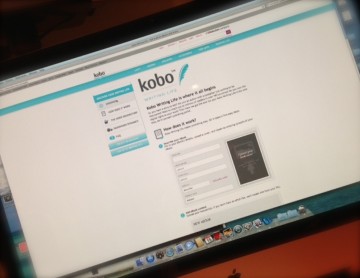Have you ever thought about writing a book? I’ve encountered so many friends who have considered this. It’s not an easy industry especially in Canada. I once worked at a childrens book publishers and had the fortunate experience of working side-by-side with the book editors who were flooded with manuscripts on a daily basis. During that time, I had friends ask for advice. It’s no secret that authors have struggled in the past to get their stories published or even noticed and then there’s the marketing and publicity side of things. Actually, that was my job back then. I was the national publicist for several book authors (don’t ask me how many book signings I had to arrange but do ask me about how I used maggots in a publicity stunt that got a national publicity award nomination).
With the increase use of electronic devices it’s easier now for anyone with a story to tell. Self-publishing is giving authors the ability to publish, market and sell their own work with unprecedented success. In fact, some of today’s best-selling authors are self-published including the lines of Hugh Howey (author of the Wool series); Christopher Paolini (author of Eragon); James Redfield (The Celestine Prophecy); and of course EL James (the Fifty Shades series).
Sooooo……where do you start?
Mark Lefebvre, Director of Self Publishing and Author Relations at Kobo Writing Life, has five tips and tricks for authors to be…
1. COVERS sell and also prevent selling.
The same goes for the book’s description – these are, in that order, the first two things all customers see. A good cover, and one that is for the target audience you are trying to reach, is ideal. To get an idea of whether or not your cover “matches” the expected style and look, look at other covers in the same category – pay particular attention to the covers of the top-selling ones, as those are obviously working for that target audience. Remember, a bad cover can work against you.
You can always update or change your cover – this is after all a digital world – even better you can have covers for your books in different markets too.
2. Think of pricing as a VERB not a NOUN. Be willing to experiment with price across different markets.
Digital publishing is flexible and you can and should experiment with price, always looking to maximize the split between unit sales and margin. Pricing plays out differently around the world, so be prepared to do some research and see what price points are trending for the category of your book in different regions on different retailers. If price A isn’t working, try price B. Also, don’t paint all your ebooks with the same “price brush” – are frontlist titles more expensive than backlist titles? Is the first book in a series a lower price so entice more customers to try out your brand? Don’t just set a price and walk away. See how it works, and price deliberately, with a plan.
3. Nothing succeeds like excess – writing your next book is the best way to sell your first book.
Most of the authors who have seen huge success in the self-publishing realm are authors with multiple properties, multiple titles. They publish a book, promote it, but then move on and keep writing; instead of getting caught up in trying to promote their title, they invest in writing the next book. Your best marketing tool for book one is the existence of book two. Why? Perhaps because it conveys to consumers that you’re not a “one trick pony” resulting in their willingness to invest some time reading your book because it could lead to more entertainment for them.
You as an author are a brand, what sort of brand are you selling? Brand is one reason why series titles do well. A customer finished one book, realizes there’s MORE by that author and digs into the next title. Ensuring that customers know there are more books by you, by providing that info at the end of each book is a great way to let your readers know there’s more for them to enjoy.
 4. Social Networking/Social Media is not about broadcasting – it is about connecting; real relationships – and it’s hard work.
4. Social Networking/Social Media is not about broadcasting – it is about connecting; real relationships – and it’s hard work.
Twitter, Facebook and other social media platforms aren’t a place to broadcast “buy my book” – that’s almost certainly the way to turn people off and have them ignore you. Instead, become part of communities that are likely to enjoy your work. Provide them with interesting content (that may or may not be related to the type of thing you write) – be part of the community; listen to what others are saying and join in the conversation – look for opportunities where you can naturally mention your work rather than blatantly marketing your work. Social media is not a place to broadcast and advertise – think of it as a place to grow a community.
5. There’s nothing “Self” about it – successful self-published authors do some, hire others and enlist the help of their tribe.
Successful self-publishing authors recognize that this is a business and that they need to behave like a business. If you are self-publishing, YOU are the publisher and are responsible for all aspects of the creation of your work. This means finding your own editor, proofreader, cover designer, etc. If you’re able to do some things yourself (because you have real graphic design talent), awesome, but even amazing writers benefit from a second (or third, or fourth) pair of eyes on their work. The real successful self-publish authors work with other authors, help one another out, become part of a community – they prop one another up, they support each other, they cheer each other one. They form collectives, they curate true fans who can become part of their “tribe” – those who are genuinely interested in helping them out. Again, this takes time, but the time and energy and effort spent can have long-term positive effects
For additional information visit www.kobo.com/writinglife
This post is not sponsored, nor was I compensated. Thanks to Kobo Writing Life for providing valuable tips on how to self-publish!


Great post, Sonya – lots of great information here… wow! (Maggots? I’m afraid to ask…)
one day lady…one day.